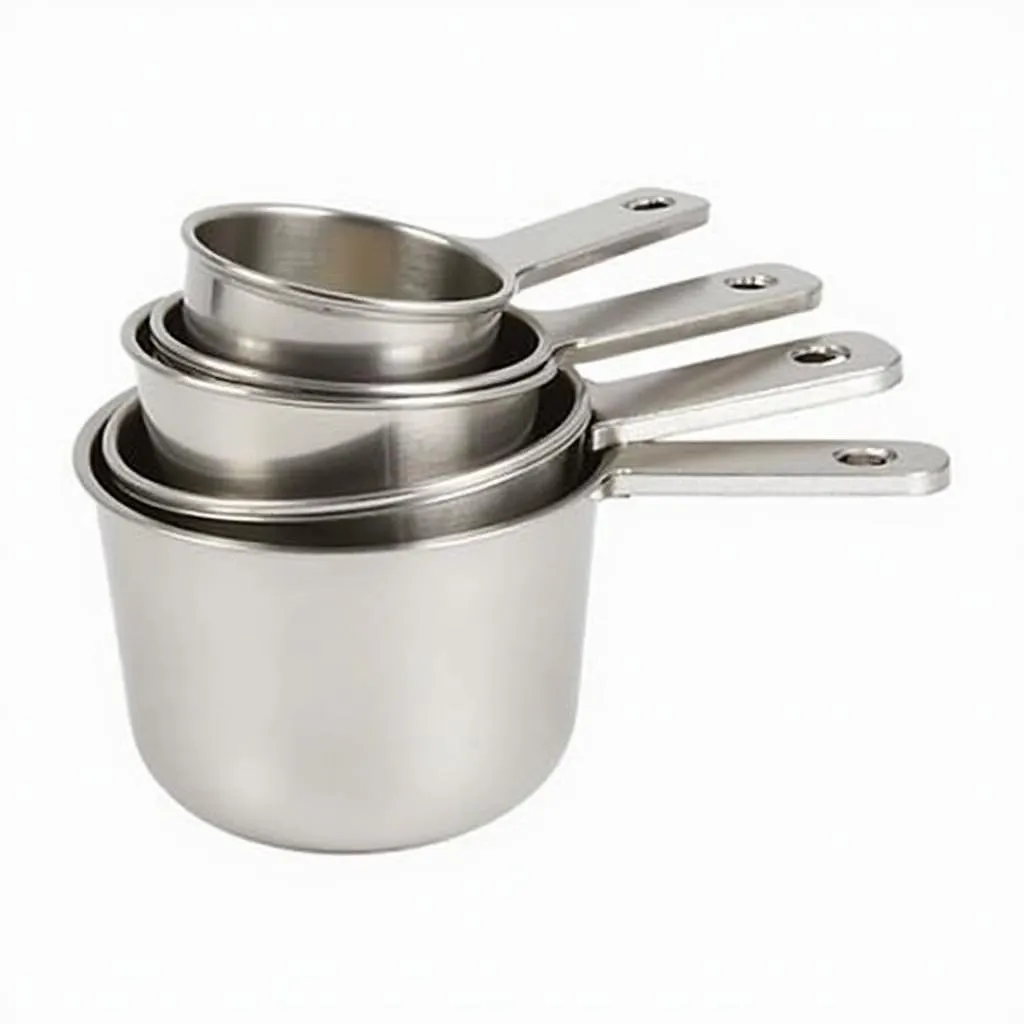Dry measuring cups are essential tools for any baker or cook. They allow you to accurately measure out dry ingredients, like flour, sugar, and spices, ensuring consistent results in your culinary creations. But with so many different types of dry measuring cups on the market, how do you choose the right ones for your needs? And how do you use them correctly to get precise measurements? This comprehensive guide will answer all your questions about dry measuring cups, from their history and types to proper usage and tips for choosing the best ones.
Understanding Dry Measuring Cups: A Brief History
Dry measuring cups have been around for centuries, evolving alongside cooking and baking practices. Early versions were often made from materials like wood, metal, or even clay. Over time, materials like glass and plastic became more common, offering durability, ease of cleaning, and affordability. Today, a wide array of dry measuring cups are available, catering to various culinary needs and preferences.
Types of Dry Measuring Cups
Dry measuring cups come in various shapes, sizes, and materials. Here’s a breakdown of the most common types:
1. Nested Dry Measuring Cups
These sets typically consist of four cups – 1 cup, ½ cup, ⅓ cup, and ¼ cup – that nest together for compact storage. They are often made of stainless steel, plastic, or glass and offer a convenient solution for most baking and cooking tasks.
2. Individual Dry Measuring Cups
These are single cups available in various sizes, like 1 cup, ½ cup, ¼ cup, or even smaller increments. They are often made of plastic, metal, or glass and offer flexibility in choosing specific sizes.
3. Liquid Measuring Cups
While not strictly dry measuring cups, liquid measuring cups can be used to measure dry ingredients. However, it’s important to remember that they are designed for liquid measurements and may not provide accurate measurements for dry ingredients.
Choosing the Right Dry Measuring Cups
When selecting dry measuring cups, consider these factors:
- Material: Stainless steel offers durability and resistance to staining, while plastic is lightweight and affordable. Glass is transparent, allowing you to easily see the contents.
- Size: Choose a set with a variety of sizes to cater to different recipes.
- Handles: Consider cups with handles for a comfortable grip, especially when handling hot ingredients.
- Lids: Lids can be helpful for storing leftover ingredients or keeping them fresh.
Using Dry Measuring Cups Correctly
Here’s a step-by-step guide to using dry measuring cups:
- Choose the right size: Select the dry measuring cup corresponding to the required measurement in your recipe.
- Level the ingredients: Use a straight-edged tool like a butter knife or the back of a spoon to level off the dry ingredient at the top of the measuring cup. Avoid packing the ingredients down, as this will result in inaccurate measurements.
- Transfer to your recipe: Gently pour the measured ingredient into your recipe.
Tips for Using Dry Measuring Cups
- Flour: For accurate flour measurements, use the “spoon-and-level” method: lightly spoon flour into the measuring cup until it overflows, then level off the top with a straight-edged tool.
- Sugar: When measuring sugar, use the “scoop-and-level” method: scoop sugar into the measuring cup using a spoon, then level off the top with a straight-edged tool.
- Spices: For spices, use the “spoon-and-level” method. However, be sure to tap the bottom of the measuring cup lightly to settle the spices before leveling them off.
Conclusion
Dry measuring cups are an essential tool for any cook or baker, allowing you to accurately measure dry ingredients and ensure consistent results in your culinary creations. By choosing the right type of dry measuring cups and using them correctly, you can confidently create delicious meals and desserts that everyone will love.
FAQ
1. Can I use liquid measuring cups for dry ingredients?
While you can use liquid measuring cups for dry ingredients, it’s not recommended. Liquid measuring cups are designed for liquid measurements and may not provide accurate measurements for dry ingredients.
2. How do I clean dry measuring cups?
Most dry measuring cups are dishwasher safe, but always check the manufacturer’s instructions. You can also hand wash them with warm soapy water.
3. How often should I replace my dry measuring cups?
The lifespan of dry measuring cups depends on their material and usage. Plastic cups may need to be replaced more frequently than stainless steel or glass cups. If you notice any cracks, scratches, or warping, it’s time to replace your cups.
4. What are some alternative methods for measuring dry ingredients?
You can also use a kitchen scale to measure dry ingredients accurately. A scale provides precise measurements and eliminates the need for measuring cups altogether.
5. Where can I buy dry measuring cups?
Dry measuring cups are readily available at most grocery stores, department stores, and kitchenware shops. You can also find a wide selection online from retailers like Amazon and Walmart.
If you need any help or have any questions, please feel free to contact us. We are available 24/7 to assist you. You can reach us at 0372999996, [email protected] or visit us at 236 Cầu Giấy, Hà Nội.

